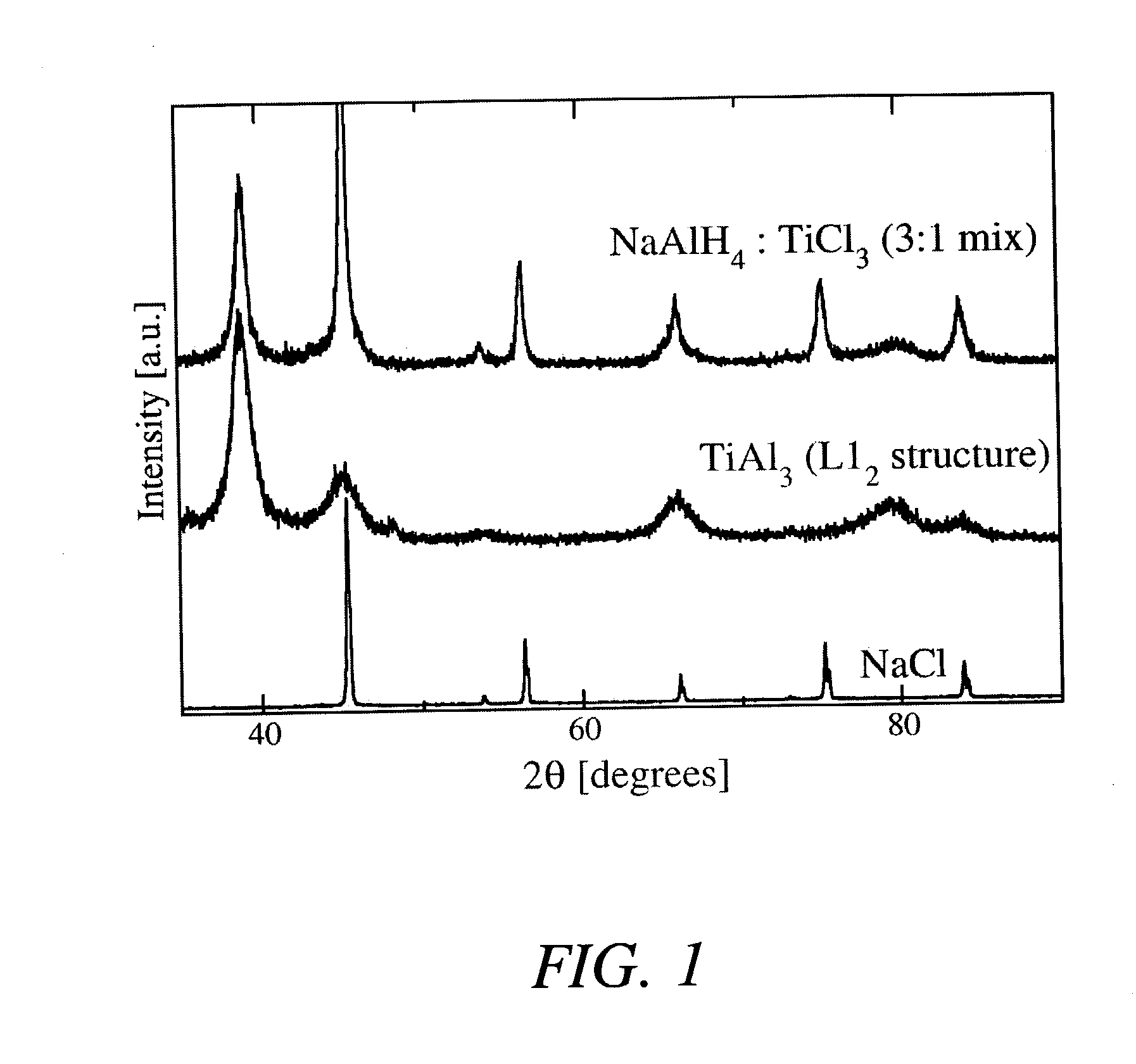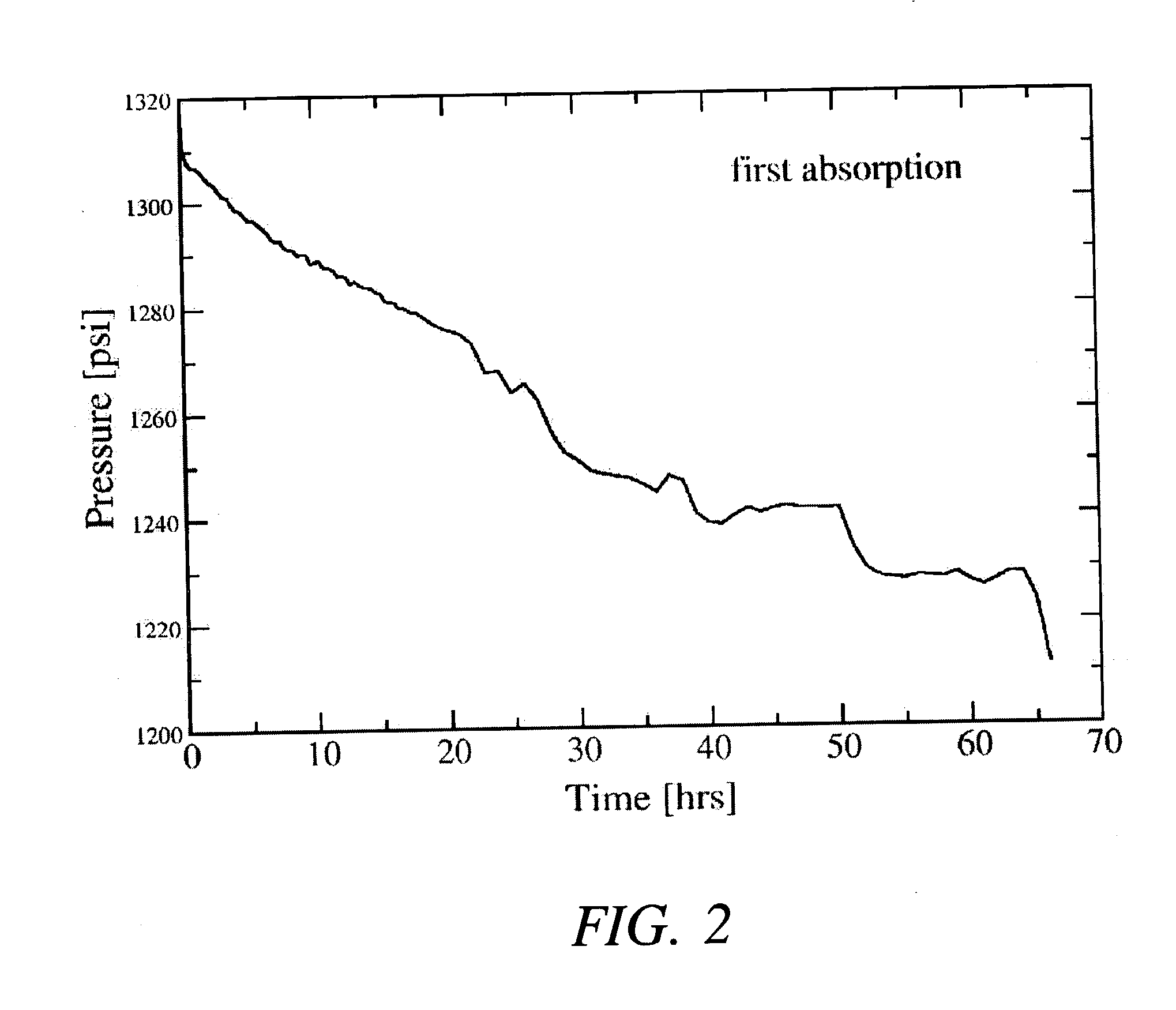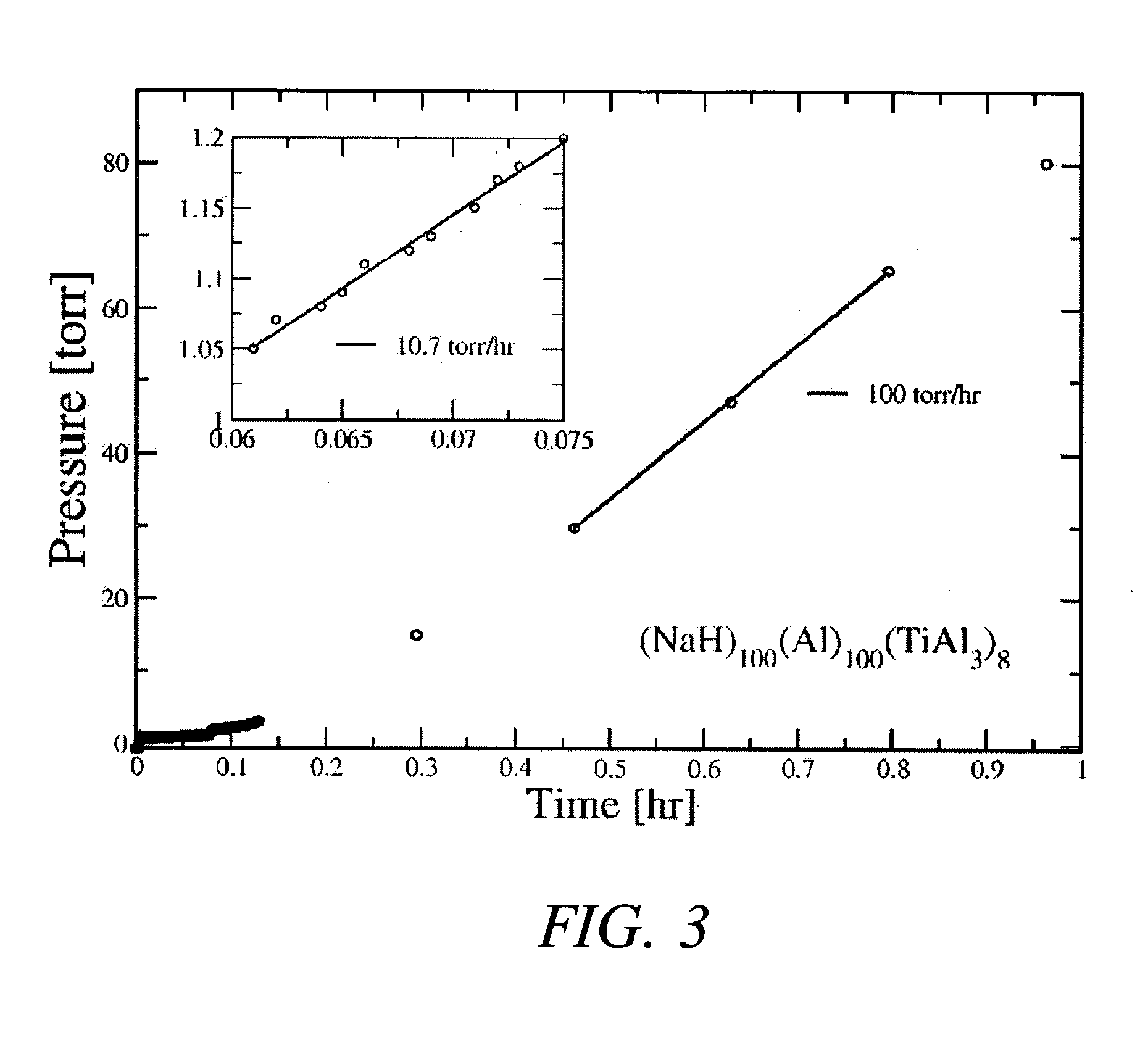Direct synthesis of hydride compounds using a titanium aluminate dopant
a technology of titanium aluminate and hydride compounds, which is applied in the direction of metal hydrides, inorganic chemistry, multi-metal hydrides, etc., can solve the problems of reducing the overall capacity of the hydride system to store hydrogen, slow and unstable kinetics of the system, and generally considered too irreversible for practical hydrogen storage applications
- Summary
- Abstract
- Description
- Claims
- Application Information
AI Technical Summary
Problems solved by technology
Method used
Image
Examples
Embodiment Construction
[0025] In a first example, the hydride NaAlH.sub.4 was produced by combining 2.74 grams of NaH with 3.08 grams of aluminum metal powder and 1.18 grams of a TiAl.sub.3 catalyst precursor compound (molar ratios of 1:1:0.08) and then mechanically milling these powders in a tungsten-carbide lined steel vial with 6 tungsten-carbide balls in a SPEX.TM. mill (SPEX.TM. 8000) packed at a powder-to-ball weight ratio of about 1:7. The process was carried out at room temperature and under an argon atmosphere. The mixture of powders was milled for about 2 hours.
[0026] After milling the powders, approximately 2 grams of the mixture (under an argon atmosphere) was transferred to a stainless steel reactor vessel whose internal volume, measured to be about 119.2 ml, sealed, and pressurized with about 0.44 moles of high purity (>99.99%) hydrogen gas. The gas pressure within the reactor was increased from atmospheric ambient to between about 1340 psig after which the reactor was valved off and its con...
PUM
| Property | Measurement | Unit |
|---|---|---|
| temperature | aaaaa | aaaaa |
| temperature | aaaaa | aaaaa |
| temperature | aaaaa | aaaaa |
Abstract
Description
Claims
Application Information
 Login to View More
Login to View More - R&D
- Intellectual Property
- Life Sciences
- Materials
- Tech Scout
- Unparalleled Data Quality
- Higher Quality Content
- 60% Fewer Hallucinations
Browse by: Latest US Patents, China's latest patents, Technical Efficacy Thesaurus, Application Domain, Technology Topic, Popular Technical Reports.
© 2025 PatSnap. All rights reserved.Legal|Privacy policy|Modern Slavery Act Transparency Statement|Sitemap|About US| Contact US: help@patsnap.com



